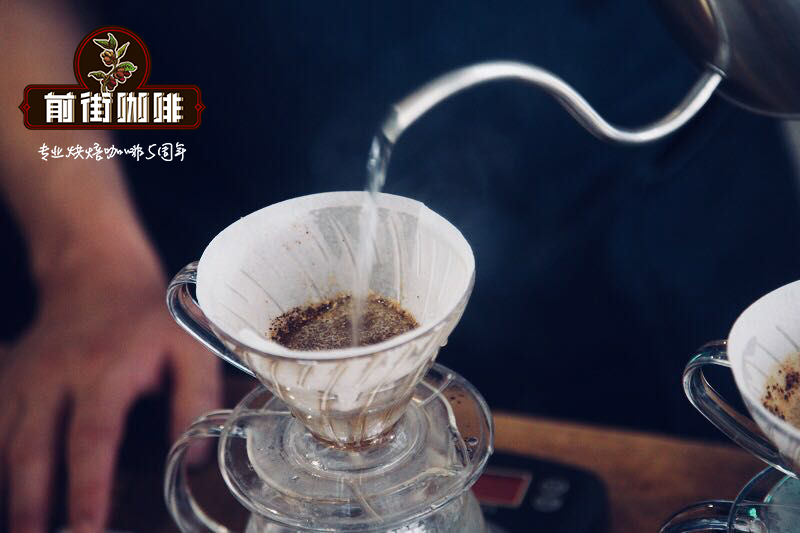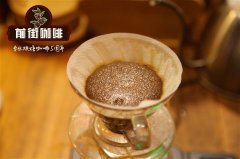Introduction to the taste and flavor of the world's most unique coffee Yemeni coffee history

Professional coffee knowledge exchange more coffee bean information please follow the coffee workshop (Wechat official account cafe_style)
Yemeni Coffee Yemen
Coffee lovers must know that coffee was first found in Ethiopia in Africa, but it was in Yemen that really carried it forward. Around the beginning of the 17th century, the Yemeni port of Mocha was a thriving trading port through which coffee was shipped to Europe and caused a frenzy in Europe, which made mocha famous. Yemeni coffee has a spicy, fermented fruit and complex taste.
Although the earliest "mocha coffee" refers to the coffee exported from the port of Mocha in Yemen, the mocha coffee now refers to one of the Italian seasoned coffee, which is made by adding bitter cocoa and blending with milk. in this way, the bitter seasoned coffee is similar to the "mocha" coffee exported from Yemen, so it is also named mocha coffee.
You've heard of mocha coffee, a cup of espresso and milk with chocolate. However, this is not the original intention of Mocha. Mocha (or Mokha) is actually the name of the port in Yemen (Yemen), and Arabica coffee was first traded in 1600s.
In June this year, I tried Yemeni coffee for the first time in Mingshui Park in Hokkaido. It is said that Yemeni coffee is one of the most unique tasting and pursuing coffee in the world. I don't agree. After the first cup, I felt like I was in heaven! Haha, I think in addition to my happy mood, the water there also creates magic. The overall texture is very smooth with earthy and small chocolate-like tasting notes. The complex acidity and aftertaste are long.
In addition to the unique taste, the size of Yemeni coffee beans is also very unique-very small beans compared to other coffee beans (Arabian coffee beans). Guess why? Yemen is a very poor and chaotic country with an acute shortage of water supply. Coffee trees usually grow on very high terraces (terraces) with little water supply. Coffee trees living in such a disadvantageous condition need to learn how to survive-which produces the unique size and flavor of Yemeni beans.
All Yemeni coffee beans are dried (sun-treated) because sunlight has never been a problem. Although the output is small, most beans are exported to Saudi Arabia. So if you have a chance to try a cup of Yemeni coffee, don't think twice! Try not to add any milk or sugar, this is the only way you can really enjoy a good cup of coffee.
Yemen (Republic of Yemen) is an Arab country. So where is Yemen? Southern Yemen faces North Africa and is separated by the Red Sea. Yemen borders Saudi Arabia in the north.
Now you might ask, how about the name "Mocha Java"? It is actually one of the earliest blends in the world, Java blends (or Mokha) in Yemen and Indonesia. The coffee was traded between the busy port of Mokha in Yemen and Java in Indonesia. That's how the name comes from, but today, although demand is always higher than supply, most Mocha Java is a mixture of beans from Ethiopia and Sumatra.
I like coffee, and my drinking habits have changed a lot-drinking coffee from coffee shops and cafes, then making my own coffee shop with a coffee maker, and now grinding baked beans and hand-brewing at home. I now enjoy a special cup of coffee without adding anything. Drinking coffee and drinking wine (although I am not a wine lover), you can use a series of professional words (according to the SCAA sommelier's taste wheel precise 172) to describe taste and aroma. The taste and level of sweetness, acidity and bitterness depend on the production area and baking level.
Related recommendation: what is mocha coffee? Yemeni mocha-Matali sun beans are the real mocha coffee beans in Yemen
Important Notice :
前街咖啡 FrontStreet Coffee has moved to new addredd:
FrontStreet Coffee Address: 315,Donghua East Road,GuangZhou
Tel:020 38364473
- Prev

The difference between Haramoka and Yemeni mokamatari which bean tastes better?
Professional coffee knowledge exchange more coffee bean information please follow the coffee workshop (Wechat official account cafe_style) I use Idido's Haramoka and Yemeni mocha Matali to make a comparison because the style and personality of Haramoka raw beans are different from different planting places and different processing plants, because some Haramoka styles tend to be snow coffee, so I use IDID
- Next

Yemen coffee boutique coffee beans origin flavor introduction Yemen coffee beans good to drink
Professional coffee knowledge exchange More coffee bean information Please pay attention to Coffee Workshop (Weixin Official Accounts cafe_style) Mokha Mattari: a kind of Bani Mattar(another way to write it is Bany Mattar) from the west of Yemen's capital Sanaa Province, the most famous coffee market name. Coffee grown at high altitudes, usually with a good red wine
Related
- Detailed explanation of Jadeite planting Land in Panamanian Jadeite Manor introduction to the grading system of Jadeite competitive bidding, Red bid, Green bid and Rose Summer
- Story of Coffee planting in Brenka region of Costa Rica Stonehenge Manor anaerobic heavy honey treatment of flavor mouth
- What's on the barrel of Blue Mountain Coffee beans?
- Can American coffee also pull flowers? How to use hot American style to pull out a good-looking pattern?
- Can you make a cold extract with coffee beans? What is the right proportion for cold-extracted coffee formula?
- Indonesian PWN Gold Mandrine Coffee Origin Features Flavor How to Chong? Mandolin coffee is American.
- A brief introduction to the flavor characteristics of Brazilian yellow bourbon coffee beans
- What is the effect of different water quality on the flavor of cold-extracted coffee? What kind of water is best for brewing coffee?
- Why do you think of Rose Summer whenever you mention Panamanian coffee?
- Introduction to the characteristics of authentic blue mountain coffee bean producing areas? What is the CIB Coffee Authority in Jamaica?

